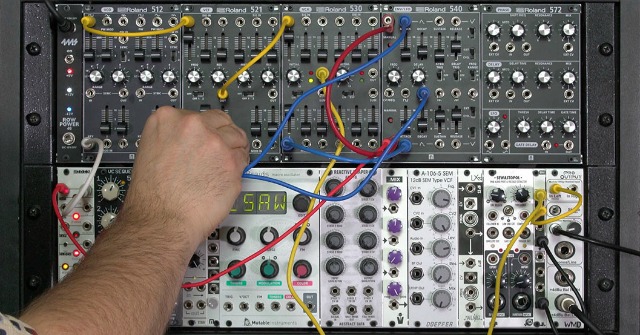Learning Modular: A Glossary of Terms
US Do you know your AHDSR from your LPG? 21/11/16

|
Getting into modular synths can be a bit scary at first, as well as the scare your bank balance is going to get you also need to know what all those abbreviations and acronyms mean!
This glossary of terms from Learning Modular aims to help you cut through the all the unusual terminology to make understanding modular just that little bit easier.
The glossary is very easy to navigate giving an a-z of modular terms and also a search function. Throughout the Learning Modular site if you see a term with a dashed underline you can hover over it to see the short version of the glossary definition or click on the term to open its full definition.
Here's a few of the terms that really got us scratching our heads when we started diving down this rabbit hole:
LPG
By strict definition, a low pass gate (LPG) is a low pass filter whose cutoff frequency goes down into the subsonic range as its control voltage goes towards 0 volts, resulting in the input signal being filtered almost into silence. Some replicate this by combining a low pass filter and a voltage controlled amplifier into the same module, with both following the same control voltage. In either case, as an input envelope falls from a high level to 0 volts, the output gets duller (higher harmonics are filtered more) as it falls to silence. This mimics the way many natural sounds work. Click through for more details and examples.
Bipolar
No, not a disorder that afflicts synthesists who have a love/hate relationship with their instrument! A voltage that can range both above and below zero is referred to as bipolar. Some modulation signals inside a modular synth – such as tremolo (varying the pitch of an oscillator both above and below the note it is supposed to be playing) – are bipolar in nature.
Comparator
An electrical device that compares the level of one voltage to a second. That second voltage may be a second input on a comparator synth module, or may be set with a knob or internal reference voltage. Most often, a comparator outputs a gate signal that goes high when the first signal is higher than the second (or vice versa), and which goes low when the first signal is lower than the second. At audio rates, it converts an input waveform into a square or pulse wave, with the second signal setting when the new waveform goes high or low in voltage.
GAS
Many find modular synthesis addictive, succumbing to an uncontrollable urge to keep adding more modules to their systems. Modular addicts jokingly refer to this as having a case of severe GAS: Gear Acquisition Syndrome.
For more explanations visit the Learning Modular site or take one of their Lynda.com courses.
More News: Like This
- The Amazing Wee Noise Makers PGB-1 19-Apr-24
- Make UK Garage With Bthelick 19-Apr-24
- $45 Polyphonic Phase Modulation Synth 19-Apr-24
- How To Let Go of Your Ego When Performing 19-Apr-24
- Testing $40,000 Worth Of High-End Mixers 19-Apr-24
Even more news...
Want Our Newsletter?
More Stories:
More...
The Avila Brothers talk about their journey to the recent Super Bowl Halftime Show
Older Music Machines & the People Who Still Use Them
Developments for Korg's instrument have been slow but promising.








